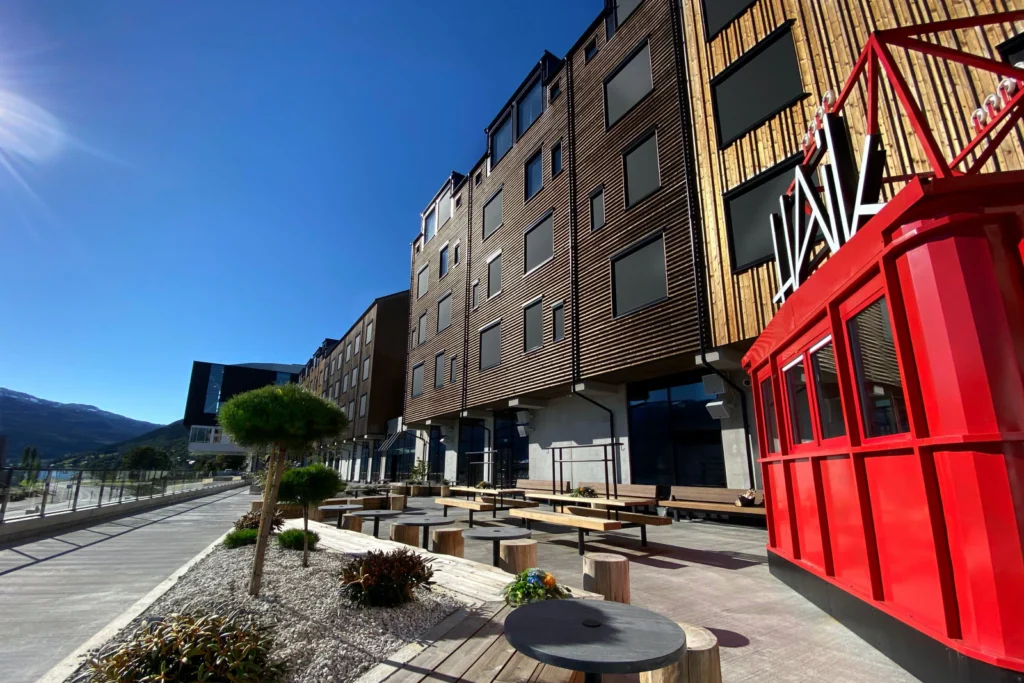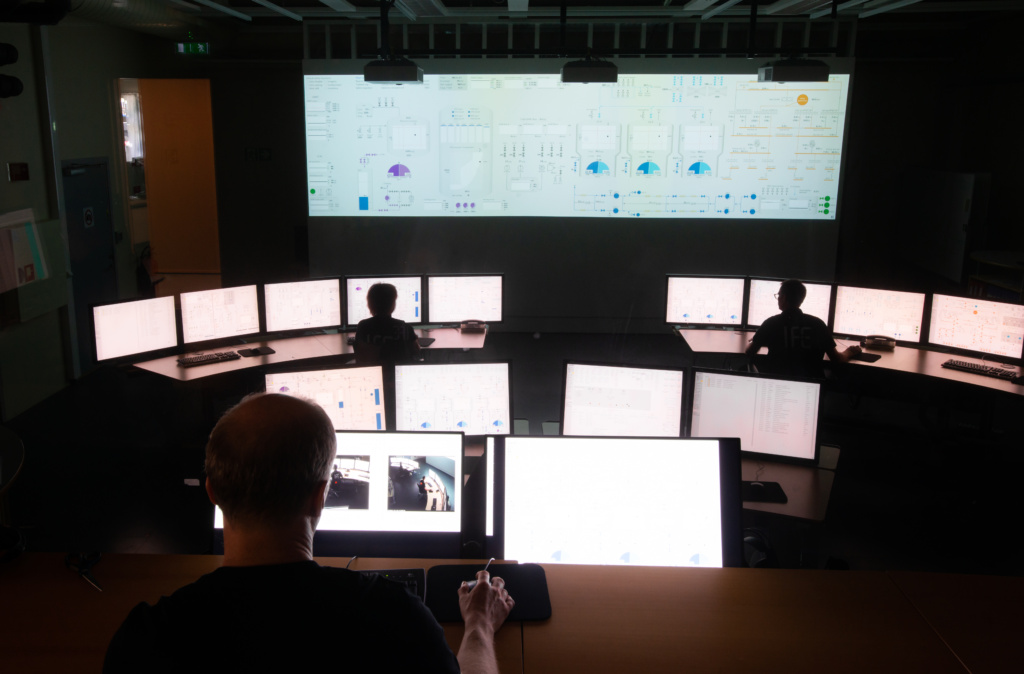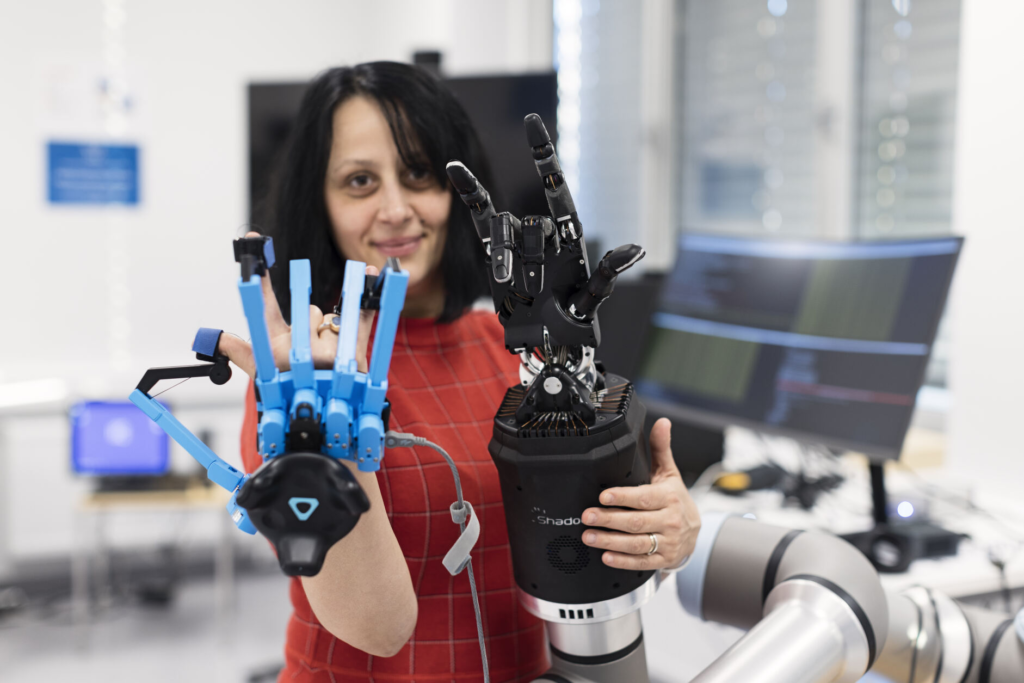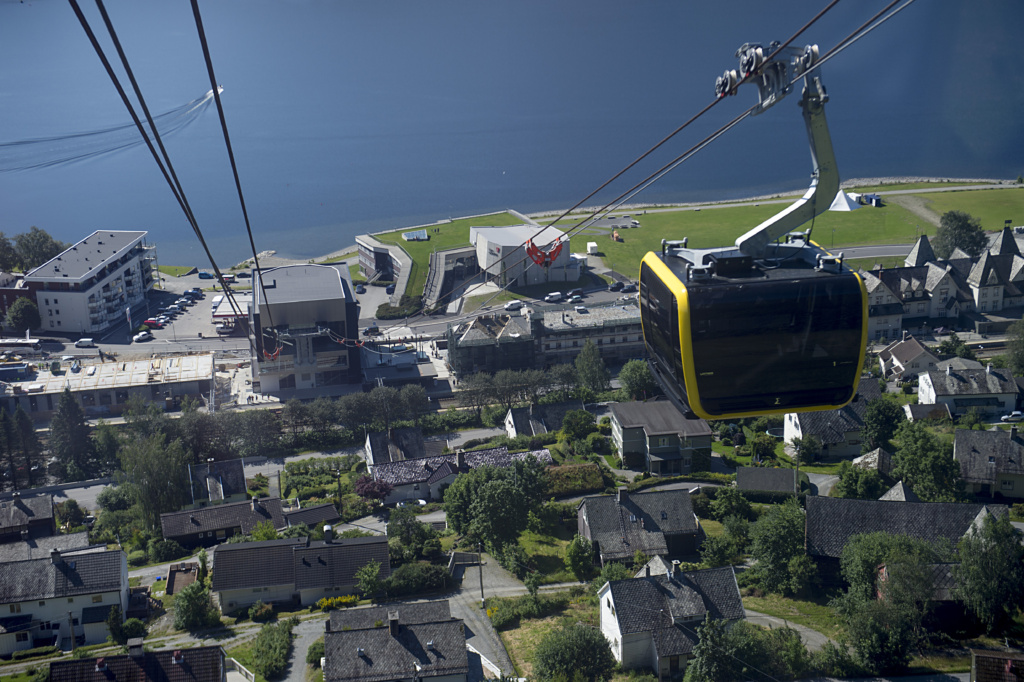The EHPRG 2025 meeting is the main conference organised by the Halden HTO Project and takes place 4th-9th May in Voss.

Call for papers
Contributions from member organisations are encouraged and welcomed.
Intended abstracts to be submitted to the Project by 7th of February to Ronja Sveen Bye ronja.sveen.bye@ife.no
The full text of these contributions should be received by the Project by 28th of March to Ronja Sveen Bye ronja.sveen.bye@ife.no

Registration
On-site participation
Virtual
Program
Overall program
Detailed program
Technical Programme and Scope for EHPRG 2025
The meeting will open with an Introductory Session containing overview presentations and invited papers given by keynote speakers. Broader aspects of some of the topics to be covered in the Technical Sessions are often covered in this opening session.
The subsequent Technical Sessions will address the work performed by the Project, as well as by member organisations.

The topics to be covered
- HUMAN PERFORMANCE
- DIGITAL I&C – SAFETY ASSURANCE
- CONTROL ROOM DESIGN & EVALUATION
- HUMAN-AUTOMATION COLLABORATION
- DIGITAL SYSTEMS FOR OPERATIONS AND MAINTENANCE
- SUSTAINABLE DECOMMISSIONING and ASSET LIFECYCLE MANAGEMENT
- CYBER SECURITY FOR MAIN CONTROL ROOMS
Location and meeting venue for EHPRG 2025
The Town of Voss – Scandic Voss hotel
Voss is a charming town in western Norway, known for its stunning natural surroundings and strong cultural heritage. Located between fjords and mountains, it is often referred to as an adventure hub, attracting visitors year-round for outdoor activities. Voss is vell known for annually hosting the Ekstremsportveko (Extreme Sports Week).
The Voss Gondol is one of Voss’s most popular tourist destination. With this modern cable car, the town of Voss gets connected to Mount Hanguren, which offers stunning panoramic views of the surrounding mountains, lakes, and fjords. The Voss Gondol is Norway’s largest gondola.

Travel Arrangements to Scandic Voss hotel
How to get to Norway
It is recommended to either fly to Bergen Airport Flesland (BGO) (nearby the city of Bergen) or Oslo Airport Gardemoen (OSL) (nearby the capitol of Oslo).
How to get to the city centre of Bergen:
Use the local Taxi service: for example Bergen Taxi .
How to get to the city of Oslo:
It is recommended to use one of the rail services, for example the Oslo Airport Express.
Travel from Bergen to Voss by public transportation
By train or bus: The most convenient option is to take a train on the Bergen Railway (Bergensbanen). The journey takes about 2 hours and offers scenic views along the way. Or you can take the bus. The bus travel between Bergen and Voss is taking about 2 hours. Please advise the public travel planner: Entur, or the operator VY.
Travel from Oslo to Voss by public transportation
By train: The Bergen Railway from Oslo to Voss is a 5.5-6 hour trip. The route is one of the most scenic in Europe, passing through mountain ranges, fjords, and valleys. Please advise the public travel planner: Entur or the operator VY.
If you choose to rent a car, the travel from Bergen to Voss takes 2 hours, while from Oslo to Voss it is around 6-7 hours.
Speakers
Dr. Ahmad Al Rashdan, DOE, USA
Dr. Ahmad Al Rashdan leads Plant Modernization efforts under the DOE’s Light Water Reactor Sustainability Program and oversees sensor integration for the DOE’s Advanced Sensors and Instrumentation Program. He is a senior scientist and has been Principal Investigator or Co-Principal Investigator for numerous efforts in advanced nuclear technologies.
Dr. Al Rashdan holds several professional roles, including founding the American Nuclear Society’s Ad-hoc Committee on AI for Nuclear, serving on various committees, and contributing to industry workgroups and international guidance documents. He is a senior member of IEEE and active in the American Nuclear Society.
He holds a Ph.D. in nuclear engineering from Texas A&M University, an M.Sc. in information technology and automation systems from Esslingen University, and a B.Sc. in mechanical engineering from Jordan University of Science and Technology. With over 20 years of experience, he has worked at INL, ABB, Texas A&M, IAEA, Daimler Chrysler-Mercedes Group, and Fraunhofer Institute.
Dr. Al Rashdan has authored or co-authored 100+ technical reports and journal papers and holds nine patent awards and applications. He is an active reviewer for nuclear energy and IEEE journals and DOE grants. His awards include the U.S. Presidential Early Career Award for Scientists and Engineers (PECASE), a 2022 R&D 100 award, and several INL awards for innovation.
Richard Screeton, Office for Nuclear Regulation, UK
Richard has worked at the GB nuclear regulator for over 10 years during which time he has worked on the regulatory assessment of new generation III+ and IV gigawatt scale and SMR / ANT reactor designs. He has been a contributory author on several IAEA guides and co-chairs the NEA’s working group on the human and organisational factors of SMRs.
Johan Enkvist, Swedish Radiation Safety Authority (SSM), Sweden
Johan Enkvist is an analyst at the Swedish Radiation Safety Authority (SSM). He currently works as a HOF-specialist at the section for Research, department of Regulation and Knowledge. He has been working for the SSM for 17 years, mainly with oversight, regulation, and managing research. Johan is the SSM representative in Halden HTO Management Board.
Brian W. Smith, Director of the Division of Risk Analysis, Office of Nuclear Regulatory Research (RES)
Mr. Smith joined the U.S. Nuclear Regulatory Commission (NRC) in in 1996 as a Health Physicist in the Office of Nuclear Material Safety and Safeguards (NMSS). In 2002, he was selected as a Technical Assistant in the Office of the Executive Director for Operations. In 2003 he was selected as a Branch Chief in the NMSS Division of Fuel Cycle Safety, Safeguards, and Environmental Review (FCSE). In 2015, he was tasked with leading an expedited rulemaking group on cyber security for fuel cycle facilities. In 2017 he was selected for the Senior Executive Service (SES) position of Deputy Director, FCSE-NMSS. He later served in the Division of Engineering and Division of Advanced Reactors and Non-Power Production and Utilization Facilities, Office of Nuclear Reactor Regulation. He most recently served as the Director of the Division of New and Renewed Licenses, Office of Nuclear Reactor Regulation.
Mr. Smith has a has a bachelor’s degree in Nuclear Engineering from North Carolina State University.
Mitshuhiro Takanashi, NRA, Japan
I am a senior researcher at Division of Severe Accident Research Division, Nuclear Regulation Authority (NRA) – Japan. I have been working in the field of safety assessment of nuclear facilities, especially for reprocessing, for about 20 years and recently became the leader of a research group on probabilistic risk assessment for nuclear reactors. Now I am mainly responsible for Level 1 PRA methods, including HRA.
Nina Cromnier, Division of Radiological Protection and Human Aspects of Nuclear Safety, OECD Nuclear Energy Agency
Ms Nina Cromnier joined the NEA in June 2024 as Head of the Radiological Protection and Human Aspects of Nuclear Safety (RP-HANS) of the NEA.
Prior to joining the NEA, Ms Cromnier held the position of Director-General of the Swedish Radiation Safety Authority (SSM) since 2019. In her role at SSM Ms Cromnier has been chair of HERCA (Heads of European Radiological Protection Competent Authorities), and member of the IAEA Commission on Safety Standards, the International Nuclear Regulators Association (INRA) and the Western European Nuclear Regulators Association (WENRA). Previously, Ms Cromnier has been working in the Swedish administration in various roles, including Director-General of the Swedish Chemicals Agency between 2010 and 2019.
Ms Cromnier, a Swedish national, holds an MSc in Chemical Engineering, BBA and MSc in Public Administration from the KTH Royal Institute of Technology and the Stockholm School of Economics.
The NEA Division of Radiological Protection and Human Aspects of Nuclear Safety (RP-HANS)focuses on radiological protection principles, regulation and application, and on the human aspects of nuclear safety in such areas as safety culture, human and organisational factors, safety-related public communication and stakeholder engagement. RP-HANS gives technical and administrative support to the NEA High Level Group on Gender Balance in Nuclear Energy and the NEA High-Level Group on Stakeholder Engagement, Trust, Transparency and Social Sciences (HLG-SET), the Committee on Radiological Protection and Public Health (CRPPH), facilitating the execution of their programme of work, and assists NEA safety-related committees, including the Committee on Nuclear Regulatory Activities (CNRA), the Committee on the Safety of Nuclear Installations (CSNI), the Radioactive Waste Management Committee (RWMC) and the Committee on Decommissioning of Nuclear Installations and Legacy Management (CDLM), in the areas of responsibility of the respective divisions. Recently, RP-HANS led several new initiatives including Country Specific Safety Culture Forums.


